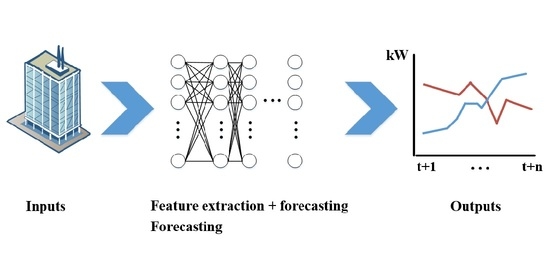A Review of Deep Learning Techniques for Forecasting Energy Use in Buildings
Abstract
1. Introduction
1.1. Motivation
1.2. A Summary of Review Papers on Data-Driven Building Energy Models
1.3. Purpose of the Literature Review
- Firstly, as noted by the review paper [17]; there is a lack of review papers which focus on novel techniques applied to forecasting energy use in buildings. Furthermore, it is noted in review papers [11,14,15,16,17] that one of the most prominent emerging techniques for data-driven energy models is deep learning. Therefore, this paper aims to address set gap. To the best of the authors’ knowledge, there is currently no review paper, which focuses directly on this topic.
1.4. Objectives and Contributions of This Literature Review
- Firstly, we introduce a framework for fundamental definitions, summarize the basic structures of deep learning, and classify their applications
- Secondly, we summarize and review current trends of deep learning techniques applied to building energy forecasting
- Finally, we investigate future developments of DL for the building energy modeling field
1.5. Research Methodology
2. Deep Learning Techniques
2.1. General Overview, Background and Classifications
- Increasing the number of hidden layers in a feed forward neural network/multi-layer perceptron
- Applying some recurrent neural networks (RNN, long-short term memory (LSTM), gated recurrent units (GRU), etc.). Such recurrent neural network models may have a single (or multiple hidden layers), however, they still may be considered a deep learning approach due to their training approaches. Unfolded, which occurs in training of the network, such models are consider networks with very deep structures as information from previous states is passed to current states [24].
- Sequentially coupling of different types of algorithms into an overall structure (for example, coupling a autoencoder for feature extraction with a support vector regression forecasting model)
2.2. Autoencoder
2.3. Recurrent Neural Networks
2.4. Convolutional Neural Networks
2.5. Deep Belief Networks
2.6. Other
3. Current Trends
3.1. Building Application Level
3.2. Data Properties
3.3. Target Variables
3.4. Input Types
3.5. Temporal Granularity
4. Deep Learning-Based Applications in Feature Extraction
5. Deep Learning in Forecasting Models
5.1. Summary of Applications at the District Level
5.1.1. Sector Level
5.1.2. City Level
5.1.3. Complex Level
5.1.4. Commercial-Residential Level
5.2. Summary of Applications at the Building Level
5.2.1. Institutional
5.2.2. Commercial
5.2.3. Residential
5.2.4. Multiple Case Studies
5.3. Summary of Applications at the Sub-Meter and Component Level
6. Discussion and Remarks
6.1. Challenges
- The majority of papers have used proprietary non-published datasets. Similarly, this observation was noticed in review paper [17] for data-driven models as a whole. The overuse of proprietary data makes it challenging to reproduce results, to do comparison-based studies, and/or to build upon the research of others.
- With a growing amount of publishers and journals, there is no standard of forecasting model information required within each journal article. This lack of a standard results in:
- (I). Missing descriptions of components/or techniques applied within their research. For instance, it was observed that a few papers did not specify their forecast horizons, hyperparameter tuning approach, etc.
- (II). Varied use of performance metrics applied within each published work. For instance, the mean absolute percent error is the most commonly applied performance metric throughout research stated in references [11] and [14]. However, it is not always applied within research and sometimes authors would deploy different metrics or modified version of the metrics.
- (III). The use of ambiguous terminology was often found in research further clouding issues.
- There is a lack of general guidelines for the development and testing of DL-based models. The lack of guidelines makes it significantly more challenging in order to develop, apply, and compare such models. For instance, it was observed that the majority of papers tuned their hyperparameters through trial and error. Having an automated procedure and/or guidelines would help with the reproducibility of results and the construction of various models.
- While the models have shown potential for improving forecasting performance at a variety of levels, they come with a tradeoff of increased model complexity and training times compared with standard ML approaches.
- Finally, it was observed there was a lack of practical applications/implementation of the models and sensitivity analysis of the models applied.
6.2. Potential Future Research Directions
- The enrichment of DL techniques across a variety of building types, with an emphasis on comparison-based papers and studies.
- Application of DL models to case studies which have not received much attention: lightning, natural gas, medium to long-term forecast horizons, sub-meter/components etc.
- Application of DL grey-box models applied to various case studies.
- Exploration of the sensitivity and uncertainty of the DL models
- The establishment of guidelines for DL model development; including automation of the hyperparameter selection
- The establishment of scalable DL-based models which can be developed and tuned in a timely manner for practical implementations across different buildings and systems
- The development of robust models which can continue to provide accurate forecasts in the event of changes of operation, sensor failure, etc.
- Implementation of the novel DL-based techniques with real applications and control systems e.g., model predictive controllers, or demand side management scheduling, optimization etc.
7. Conclusions
Author Contributions
Funding
Institutional Review Board Statement
Informed Consent Statement
Data Availability Statement
Acknowledgments
Conflicts of Interest
Appendix A. District Level
| District Level | Year | Application | DNN Type Applied | Target Variable | Reference Number |
|---|---|---|---|---|---|
| Sector | 2018 | Industrial sector | DFFNN/OA | Electricity consumption | [46] |
| 2019 | Residential and Industrial sector | LSTM/DFFNN OA | Natural gas consumption | [47] | |
| 2019 | Mackey-Glass Sector | LSTM | Natural gas consumption | [48] | |
| City | 2018 | Rottne district system Karlshamn district | DFNN/OA | Heating load | [49] |
| 2019 | District system | DFFNN/OA | Heating load | [50] | |
| 2018 | Non-residential district | DNARX/OA | Heating load Cooling load | [51] | |
| 2019 | District system | DFFNN/LSTM RNN//OA | Heating load | [52] | |
| 2019 | District system | LSTM/OA | Heating load | [53] | |
| 2020 | District system | LSTM/OA | Heating load | [54] | |
| 2019 | London, Karditsa, Hong Kong, Melbourne systems | LSTM/OA | Natural gas | [55] | |
| 2019 | Ljubljana | DRNN/OA | Natural gas | [56] | |
| Complex | 2018 | University | AE-RF/OA | Electric | [36] |
| 2019 | Industrial complex | CNN/RNN/OA | Electric | [41] | |
| 2020 | University | LSTM-FFNN | Electric Heating Cooling | [42] | |
| 2019 | University | DFFNN | Electric | [57] | |
| 2020 | Hospital complex | GMDH | Electric | [58] | |
| 2019 | District mixed buildings | DFFNN | Heating | [59] | |
| Commercial-Residential | 2016 | District heating system for residential and commercial buildings | DFFNN/OA | Heating | [60] |
| 2018 | District heating system for residential and commercial buildings | DFFNN/OA | Heating | [61] | |
| 2017 | District residential | DFFNN | Electric | [62] | |
| 2019 | District residential (agg.) Residential | LSTM/OA | Electric | [63] | |
| 2019 | District Residential (agg) Residential | LSTM/OA | Electric | [64] |
Appendix B. Building Level
| Building Level | Year | Application | DNN Type Applied | Target Variable | Reference Number |
|---|---|---|---|---|---|
| Institutional | 2017 | Education | AE-DNN/OA | Cooling | [34] |
| 2019 | Education | CNN/AE-DNN/OA | Cooling | [44] | |
| 2019 | Education | RNN/GRU/LSTM | Cooling | [66] | |
| 2020 | University | LSTM/DFFNN/OA | Cooling | [67] | |
| 2018 | University | DRNN/OA | Heating | [68] | |
| 2019 | University | GRU | Electric Cooling | [69] | |
| 2020 | University | LSTM/OA | Electric | [70] | |
| 2018 | Education | LSTM | Electric | [71] | |
| Commercial | 2016 | Office | DFFNN/OA | Cooling | [72] |
| 2018 | Office | DBN | Cooling | [73] | |
| 2017 | Office | DFNN | Hearing Cooling | [74] | |
| 2020 | Complex | DFFNN/OA | Heating | [75] | |
| 2020 | N/s Public | LSTM/CIFG/GRU/LSTM-ANN/CIFG-ANN/GRU-ANN/OA | Cooling | [45] | |
| 2017 | Retail | Extreme-SAE/OA | Overall | [35] | |
| 2018 | Hotel | LSTM | Electric | [79] | |
| 2019 | Commercial-N/s | GRU/LSTM/RNN/DFFNN | Electric | [80] | |
| 2020 | Commercial | AE-RF/DFFNN/OA | Electric | [38] | |
| 2020 | Office | RNN-seq2seq/OA | Electric | [77] | |
| 2020 | Office | LSTM/CNN/LSTM-AE/LSTM-dense | Electric | [78] | |
| 2018 | N/s Public 1 N/s Public 2 | DBN/DBEN/OA | Energy | [43] | |
| 2020 | Office | DFFNN | Energy | [76] | |
| Residential | 2019 | Residential | CNN/RNN/RNN-CNN | Electric | [40] |
| 2020 | Residential | CNN/OA | Electric | [82] | |
| 2016 | Residential customer | LSTM | Electric | [83] | |
| 2020 | Residential | LSTM/OA | Electric | [84] | |
| 2017 | Residential customer | CNN/LSTM/FRBM | Electric | [85] | |
| 2018 | Residential | LSTM/GRU/RNN/OA | Electric | [86] | |
| Multiple Case studies | 2019 | Residential/City Hall/Factory/Hospital | LSTM/MIDAS-LSTM | Electric | [87] |
| 2016 | Public Administration/ Retail/R&D/Business/ Healthcare/ Car part/Electronic/ other manufactures Aggregated loads | RBM/OA | Electric | [88] | |
| 2018 | Industrial Commercial | LSTM/OA | Electric | [89] | |
| 2018 | Public health Residential Aggregated residential | LSTMAE-ML/OA | Electric | [39] | |
| 2018 | Public-N/s | DBM/DEBM/OA | Energy | [43] | |
| 2018 | Retail Office | DBM/OA | Overall | [92] | |
| 2019 | Hotel Office | LSTM/GRU/OA | Electric | [90] | |
| 2019 | Education Commercial | CNN/GRU/OA | Electric | [91] |
Appendix C. Sub-Meter and Component Level
| Year | Application | DNN Type Applied | Target Variable | Reference Number |
|---|---|---|---|---|
| 2019 | GSHP- Office | AE-DDPG/OA | Electric | [37] |
| 2014 | GSHP HVAC | DFFNN/OA | Electric | [95] |
| 2016 | Whole building Sub-meters | CRBM/FCRBM/OA | Electric | [96] |
| 2019 | Whole building Appliances | LSTM/OA | Electric | [97] |
| 2020 | HVAC total | DDPG/OA | HVAC Electric | [98] |
| 2020 | Refrigeration system | LSTM/OA | Compressor Electric | [99] |
References
- IEA. Buildings, IEA. Available online: https://www.iea.org/topics/buildings (accessed on 2 July 2020).
- American Society of Heating; Refrigerating and Air-Conditioning Engineers. ASHRAE Handbook: Fundamentals; American Society of Heating, Refrigerating and Air-Conditioning Engineers: Atlanta, GA, USA, 2017. [Google Scholar]
- LeCun, Y.; Bengio, Y.; Hinton, G. Deep learning. Nature 2015, 521, 436–444. [Google Scholar] [CrossRef] [PubMed]
- Zhao, H.; Magoules, F. A review on the prediction of building energy consumption. Renew. Sustain. Energy Rev. 2012, 16, 3586–3592. [Google Scholar] [CrossRef]
- Kumar, R.; Aggarwal, R.; Sharma, J. Energy analysis of a building using artificial neural networks: A review. Energy Build. 2013, 65, 352–358. [Google Scholar] [CrossRef]
- Ahmad, M.; Hassan, M.; Abdullah, H.; Rahman, F.; Hussin, H.; Abdullah, H.; Saidur, R. A review on applications of ANN and SVM for building electrical energy consumption forecasting. Renew. Sustain. Energy Rev. 2014, 33, 102–109. [Google Scholar] [CrossRef]
- Li, X.; Wen, J. Review of building energy modeling for control and operation. Renew. Sustain. Energy Rev. 2014, 37, 517–537. [Google Scholar] [CrossRef]
- Wang, Z.; Srinivasan, R. A review of artificial intelligence based building energy use prediction: Contrasting the capabilities of single and ensemble prediction models. Renew. Sustain. Energy Rev. 2017, 75, 796–808. [Google Scholar] [CrossRef]
- Daut, M.; Hassan, M.; Abdullas, H.; Rahman, H.; Abdullah, M.; Hussin, F. Building electrical energy consumption forecasting analysis using conventional and artificial intelligence methods: A review. Renew. Sustain. Energy Rev. 2017, 70, 1108–1118. [Google Scholar] [CrossRef]
- Deb, C.; Zhang, F.; Yang, J.; Lee, S.; Shah, K. A review on time series forecasting techniques for building energy consumption. Renew. Sustain. Energy Rev. 2017, 74, 902–924. [Google Scholar] [CrossRef]
- Amasyali, K.; El-Gohary, N. A review of data driven building energy consumption prediction studies. Renew. Sustain. Energy Rev. 2018, 81, 1192–1205. [Google Scholar] [CrossRef]
- Wei, Y.; Zhang, X.; Shi, Y.; Xia, L.; Pan, S.; Wu, J.; Han, M.; Zhao, X. A review of data-driven approaches for prediction and classification of building energy consumption. Renew. Sustain. Energy Rev. 2018, 82, 1027–1047. [Google Scholar] [CrossRef]
- Ahmad, T.; Chen, H.; Guo, Y.; Wang, J. A comprehensive overview on the data driven and large scale based approaches for forecasting of building energy demand: A review. Energy Build. 2018, 165, 301–320. [Google Scholar] [CrossRef]
- Bourdeau, M.; Zhai, X.; Nefzaoui, E.; Guo, X.; Chatellier, P. Modeling and forecasting building energy consumption: A review of data driven techniques. Sustain. Cities Soc. 2019, 48, 101533. [Google Scholar] [CrossRef]
- Mohandes, S.; Zhang, X.; Mahdiyar, A. A comprehensive review on the application of artificial neural networks in building energy analysis. Neurocomputing 2019, 340, 55–75. [Google Scholar] [CrossRef]
- Runge, J.; Zmeureanu, R. Forecasting energy use in buildings using artificial neural networks: A review. Energies 2019, 12, 3254. [Google Scholar] [CrossRef]
- Sun, Y.; Haghighat, F.; Fung, B. A review of the-state-of-the-art in data-driven approaches for building energy prediction. Energy Build. 2020, 221, 110022. [Google Scholar] [CrossRef]
- Wang, H.; Lei, Z.; Zhang, X.; Zhou, B.; Peng, J. A review of deep learning for renewable energy forecasting. Energy Convers. Manag. 2019, 198, 111799. [Google Scholar] [CrossRef]
- Aslam, Z.; Javaid, N.; Ahmad, A.; Ahmed, A.; Gulfam, S. A combined deep learning and ensemble learning methodology to avoid electricity theft in smart grids. Energies 2020, 13, 5599. [Google Scholar] [CrossRef]
- Marcjasz, G. Forecasting electricity prices using deep neural networks: A robust hyper-parameter selection scheme. Energies 2020, 13, 4605. [Google Scholar] [CrossRef]
- Tao, Q.; Liu, F.; Li, Y.; Sidorov, D. Air pollution forecasting using a deep learning model based on 1D convnets and bidirectional GRU. IEEE Access 2019, 7, 6690–76698. [Google Scholar] [CrossRef]
- Liu, M.; Li, G.; Li, J.; Zhu, X.; Yao, Y. Forecasting the price of Bitcoin using deep learning. Financ. Res. Lett. 2020. [Google Scholar] [CrossRef]
- Bengio, Y. Learning deep architectures for AI. Found. Trends Mach. Learn. 2009, 2, 1–127. [Google Scholar] [CrossRef]
- Goodfellow, I.; Bengio, Y.; Courville, A. Deep Learning; MIT Press: Cambridge, MA, USA, 2016. [Google Scholar]
- Olah, C. Understanding LSTM Networks. 27 August 2015. Available online: https://colah.github.io/posts/2015-08-Understanding-LSTMs/ (accessed on 2 July 2020).
- Amidi, A.; Amidi, S. Recurrent Neural Networks Cheatsheet. Standford University. Available online: https://stanford.edu/~shervine/teaching/cs-230/cheatsheet-recurrent-neural-networks (accessed on 15 July 2020).
- Wang, H.; Raj, B. On the Origin of Deep Learning. arxiv 2017, arXiv:1702.07800. [Google Scholar]
- Hinton, G.; Osindero, S.; Yee-Whye, T. A Fast learning algorithm for deep belief nets. Neural Comput. 2006, 18, 1527–1554. [Google Scholar] [CrossRef] [PubMed]
- University of Toronto. CSC2535 Lectures. 16 July 2020. Available online: http://www.cs.toronto.edu/~hinton/csc2535/lectures.html (accessed on 20 July 2020).
- Hong, T.; Fan, S. Probabilistic electric load forecasting: A tutorial review. Int. J. Foreast. 2016, 32, 914–938. [Google Scholar] [CrossRef]
- Hong, T.; Shahidehpour, M. Load Forecasting: Case Study; United States Department of Energy: Washington, DC, USA, 2015. [Google Scholar]
- Song, K.; Baek, Y.; Hong, D.; Jang, G. Short-term load forecasting for the holidays using fuzzy linear regression method. IEEE Trans. Power Syst. 2005, 20, 96–101. [Google Scholar] [CrossRef]
- Alpaydin, E. Introduction to Machine Learning, 3rd ed.; PHI Learning Pvt. Ltd.: Delhi, India, 2014. [Google Scholar]
- Fan, C.; Xiao, F.; Zhao, Y. A short-term building cooling load prediction method using deep learning algorithms. Appl. Energy 2017, 195, 222–233. [Google Scholar] [CrossRef]
- Li, C.; Ding, Z.; Zhao, D.; Yi, J.Y.; Zhang, G. Building energy consumption prediction: An extreme deep learning approach. Energies 2017, 10, 1525. [Google Scholar] [CrossRef]
- Son, M.; Moon, J.; Jung, S.; Hwang, E. A Short-Term Load Forecasting Scheme Based on Auto-Encoder and Random Forest. In Applied Physics, System Science and Computers III; APSAC 2018. Lecture Notes in Electrical Engineering; Ntalianis, K., Vachtsevanos, G., Borne, P., Croitoru, A., Eds.; Springer: Cham, Switzerland, 2018; Volume 574. [Google Scholar] [CrossRef]
- Liu, T.; Xu, C.; Guo, Y.; Chen, H. A novel deep reinforcement learning based methodology for short-term HVAC system energy consumption prediction. Int. J. Refrig. 2019, 107, 39–51. [Google Scholar] [CrossRef]
- Moon, J.; Jung, S.; Rew, J.; Rho, S.; Hwang, E. Combination of short-term load forecasting models based on a stacking ensemble approach. Energy Build. 2020, 216, 109921. [Google Scholar] [CrossRef]
- Rahman, A.; Srikumar, V.; Smith, A. Predicting electricity consumption for commercial and residential buildings using deep recurrent neural networks. Appl. Energy 2018, 212, 372–385. [Google Scholar] [CrossRef]
- Kim, T.; Cho, S. Predicting residential energy consumption using CNN-LSTM neural networks. Energy 2019, 182, 72–81. [Google Scholar] [CrossRef]
- Kim, J.; Moon, J.; Hwang, E.; Kang, P. Recurrent inception convolution neural network for multi short-term load forecasting. Energy Build. 2019, 194, 328–341. [Google Scholar] [CrossRef]
- Wang, S.; Wang, S.; Chen, H.; Gu, Q. Multi-energy load forecasting for regional integrated energy systems considering temporal dynamic and coupling characteristics. Energy 2020, 195, 116964. [Google Scholar] [CrossRef]
- Zhang, G.; Tian, C.; Li, C.; Zhang, J.; Zuo, W. Accurate forecasting of building energy consumption via a novel ensembled deep learning method considering the cyclic feature. Energy 2020, 201, 117531. [Google Scholar] [CrossRef]
- Fan, C.; Sun, Y.; Zhao, Y.; Song, M.; Wang, J. Deep learning-based feature engineering methods for improved building energy prediction. Appl. Energy 2019, 240, 35–45. [Google Scholar] [CrossRef]
- Zhang, C.; Li, J.; Zhao, Y.; Li, T.; Chen, Q.; Zhang, X. A hybrid deep learning-based method for short-term building energy load prediction combined with an interpretation process. Energy Build. 2020, 225, 110301. [Google Scholar] [CrossRef]
- Azadeh, A.; Ghaderi, S.; Sohrabkhani, S. Annual electricity consumption forecasting by neural network in high energy consuming industrial sectors. Energy Convers. Manag. 2008, 49, 2272–2278. [Google Scholar] [CrossRef]
- Laib, O.; Khadir, M.; Mihaylova, L. Toward efficient energy systems based on natural gas consumption prediction with LSTM Recurrent Neural Networks. Energy 2019, 177, 530–542. [Google Scholar] [CrossRef]
- Su, H.; Zio, E.; Zhang, J.; Xu, M.; Li, X.; Zhang, Z. A hybrid hourly natural gas demand forecasting method based on the integration of wavelet transform and enhanced Deep-RNN model. Energy 2019, 178, 585–597. [Google Scholar] [CrossRef]
- Suryanarayana, G.; Lago, J.; Geysen, D.; Aleksiejuk, P.; Johansson, C. Thermal load forecasting in district heating networks using deep learning and advanced feature selection methods. Energy 2018, 157, 141–149. [Google Scholar] [CrossRef]
- Xue, P.; Jiang, Y.; Zhou, Z.; Chen, X.; Fang, X.; Liu, J. Multi-step ahead forecasting of heat load in district heating systems using machine learning algorithms. Energy 2019, 188, 116085. [Google Scholar] [CrossRef]
- Koschwitz, D.; Frisch, J.; Treeck, C.V. Data-driven heating and cooling load predictions for non-residential buildings based on support vector machine regression and NARX Recurrent Neural Network: A comparative study on district scale. Energy 2018, 165, 134–142. [Google Scholar] [CrossRef]
- Gong, M.; Zhou, H.; Wang, Q.; Wang, S.; Yang, P. District heating systems load forecasting: A deep neural networks model based on similar day approach. Adv. Build. Energy Res. 2019, 14, 372–388. [Google Scholar] [CrossRef]
- Xue, G.; Pan, Y.; Lin, T.; Song, J.; Qi, C.; Wang, Z. District heating load prediction algorithm based on feature fusion LSTM model. Energies 2019, 12, 2122. [Google Scholar] [CrossRef]
- Xue, G.; Qi, C.; Li, H.; Kong, X.; Song, J. Heating load prediction based on attention long short term memory: A case study of Xingtai. Energy 2020, 203, 117846. [Google Scholar] [CrossRef]
- Wei, N.; Li, C.; Peng, X.; Li, Y.; Zeng, F. Daily natural gas consumption forecasting via the application of a novel hybrid model. Appl. Energy 2019, 250, 358–368. [Google Scholar] [CrossRef]
- Hribar, R.; Potocnik, P.; Silc, J.; Papa, G. A comparison of models for forecasting the residential natural gas. Energy 2019, 167, 511–522. [Google Scholar] [CrossRef]
- Dagdougui, H.; Bagheri, F.; Le, H.; Dessaint, L. Neural network model for short-term and very-short-term load forecasting in district buildings. Energy Build. 2019, 203, 109408. [Google Scholar] [CrossRef]
- Zor, K.; Celik, O.; Timur, O.; Teke, A. Short-term building electrical energy consumption forecasting by employing gene expression programming and GMDH networks. Energies 2020, 13, 1102. [Google Scholar] [CrossRef]
- Reynolds, J.; Ahmad, M.; Rezgui, Y.; Hippolyte, J. Operational supply and demand optimisation of a multi-vector district energy system using artificial neural networks and a genetic algorithm. Appl. Energy 2019, 235, 699–713. [Google Scholar] [CrossRef]
- Idowu, S.; Saguna, S.; Ahlund, C.; Schelen, O. Applied machine learning: Forecasting heat load in district heating system. Energy Build. 2016, 133, 478–488. [Google Scholar] [CrossRef]
- Geysen, D.; de Somer, O.; Johansson, C.; Brage, J.; Vanhoudt, D. Operational thermal load forecasting in district heating networks using machine learning and expert advice. Energy Build. 2018, 162, 144–153. [Google Scholar] [CrossRef]
- Yuce, B.; Mourshed, M.; Rezgui, Y. A smart forecasting approach to district energy management. Energies 2017, 8, 1073. [Google Scholar] [CrossRef]
- Vesa, A.V.; Ghitescu, N.; Pop, C.; Antal, M.; Cioara, T.; Anghel, I.; Salomie, I. A stacking multi-learning ensemble model for predicting near real time energy consumption demand of residential buildings. In Proceedings of the IEEE 15th International Conference on Intelligent Computer Communication and Processing (ICCP), Cluj-Napoca, Romania, 5–7 September 2019. [Google Scholar]
- Kong, W.; Dong, Y.; Jia, Y.; Hill, D.; Xu, Y.; Zhang, Y. Short-term residential load forecasting based on lstm recurrent neural network. IEEE Trans. Smart Grid 2019, 10, 841–851. [Google Scholar] [CrossRef]
- U.S. Energy Information Agency. Commercial Building Energy Consumption Survery. 18 March 2016. Available online: https://www.eia.gov/consumption/commercial/reports/2012/energyusage/ (accessed on 1 July 2020).
- Fan, C.; Wang, J.; Gang, W.; Li, S. Assessment of deep recurrent neural network-based strategies for short-term building energy predictions. Appl. Energy 2019, 236, 700–710. [Google Scholar] [CrossRef]
- Wang, Z.; Hong, T.; Piette, M. Building thermal load prediction through shallow machine learning and deep learning. Appl. Energy 2020, 263, 114683. [Google Scholar] [CrossRef]
- Rahman, A.; Smith, A.D. Predicting heating demand and sizing a stratified thermal storage tank using deep learning algorithms. Appl. Energy 2018, 228, 108–121. [Google Scholar] [CrossRef]
- Yang, J.; Tan, K.; Santamouris, M.; Lee, S. Building energy consumption raw data forecasting using data cleaning and deep recurrent neural networks. Buildings 2019, 9, 204. [Google Scholar] [CrossRef]
- Somu, N.; Raman, G.; Ramamritham, K. A hybrid model for building energy consumption forecasting using long short term memory networks. Appl. Energy 2020, 261, 114131. [Google Scholar] [CrossRef]
- Nichiforov, C.; Stamatescu, G.; Stamatescu, I.; Calofir, V.; Fagarasan, I.; Iliescu, S. Deep learning techniques for load forecasting in large commercial buildings. In Proceedings of the 22nd International Conference on System Theory, Control and Computing (ICSTCC), Sinaia, Romania, 10–12 October 2018. [Google Scholar]
- Li, X.; Wen, J.; Bai, E.W. Developing a whole building cooling energy forecasting model for on-line operation optimization using proactive system identification. Appl. Energy 2016, 164, 69–88. [Google Scholar] [CrossRef]
- Fu, G. Deep belief network based ensemble approach for cooling load forecasting of air-conditioning system. Energy 2018, 148, 269–282. [Google Scholar] [CrossRef]
- Gunay, B.; Shen, W.; Newsham, G. Inverse blackbox modeling of the heating and cooling load in office buildings. Energy Build. 2017, 142, 200–210. [Google Scholar] [CrossRef]
- Bunning, F.; Heer, P.; Smith, R.; Lygeros, J. Improved day ahead heating demand forecasting by online correction methods. Energy Build. 2020, 211, 109821. [Google Scholar] [CrossRef]
- Luo, X.; Oyedele, L.; Ajayi, A.; Akinade, O.; Owolabi, H.; Ahmed, A. Feature extraction and genetic algorithm enhanced adaptive deep neural network for energy consumption prediction in buildings. Renew. Sustain. Energy Rev. 2020, 131, 109980. [Google Scholar] [CrossRef]
- Skomski, E.; Lee, J.; Kim, W.; Chandan, V.; Katipamula, S.; Hutchinson, B. Sequence-to-sequence neural networks for short-term electrical load forecasting in commercial office buildings. Energy Build. 2020, 226, 110350. [Google Scholar] [CrossRef]
- Gao, Y.; Ruan, Y.; Fang, C.; Yin, S. Deep learning and transfer learning models of energy consumption forecasting for a building with poor information data. Energy Build. 2020, 223, 110156. [Google Scholar] [CrossRef]
- Yong, Z.; Xiu, Y.; Chen, F.; Pengfei, C.; Binchao, C.; Taijie, L. Short-term building load forecasting based on similar day selection and LSTM network. In Proceedings of the IEEE Conference on Energy Internet and Energy System Integration, Beijing, China, 20–22 October 2018. [Google Scholar]
- Sehovac, L.; Nesen, C.; Grolinger, K. Forecasting building energy consumption with deep learning: A sequence to sequence approach. In Proceedings of the IEEE International Congress on Internet of Things (ICIOT), Milan, Italy, 8–13 July 2019. [Google Scholar]
- Stephen, B.; Tang, X.; Harvey, P.; Galloway, S.; Jennett, K. Incorporating practice theory in sub-profile models for short term aggregated residential load forecasting. IEEE Trans. Smart Grid 2017, 8, 1591–1598. [Google Scholar] [CrossRef]
- Estebsari, A.; Rajabi, R. Single residential load forecasting using deep learning and image encoding techniques. Electronics 2020, 9, 68. [Google Scholar] [CrossRef]
- Marino, D.; Amarasinghe, K.; Manic, M. Building energy load forecasting using deep neural networks. In Proceedings of the IEEE Industrial Electronics Society, Florence, Italy, 24–27 October 2016. [Google Scholar]
- Shah, M.A.; Sajjad, I.A.; Khan, M.F.N.; Iqbal, M.M.; Liaqat, R.; Shah, M. Short-term meter level load forecasting of residential customers based on smart meter’s data. In Proceedings of the International Conference on Engineering and Emerging Technologies (ICEET), Lahore, Pakistan, 22–23 February 2020. [Google Scholar]
- Amarasinghe, K.; Marino, D.L.; Manic, M. Deep neural networks for energy load forecasting. In Proceedings of the 2017 IEEE 26th International Symposium on Industrial Electronics (ISIE), Edinburgh, UK, 19–21 June 2017. [Google Scholar]
- Hossen, T.; Nair, A.; Chinnathambi, R.; Ranganathan, P. Residential load forecasting using deep neural networks (DNN). In Proceedings of the 2018 North American Power Symposium (NAPS), Fargo, ND, USA, 9–11 September 2018. [Google Scholar]
- Choi, E.; Cho, S.; Kim, D. Power demand forecasting using long short-term memory (LSTM) deep-learning model for monitoring energy sustainability. Sustainability 2020, 3, 1109. [Google Scholar] [CrossRef]
- Ryu, S.; Noh, J.; Kim, H. Deep neural network based demand side short term load forecasting. Energies 2017, 10, 3. [Google Scholar] [CrossRef]
- Jiao, R.; Zhang, T.; Jiang, Y.; He, H. Short-term non-residential load forecasting based on multiple sequences LSTM recurrent neural network. IEEE Access 2018, 6, 59438–59448. [Google Scholar] [CrossRef]
- Shan, S.; Cao, B.; Wu, Z. Forecasting the short-term electricity consumption of building using a novel ensemble model. IEEE Access 2019, 7, 88093–88106. [Google Scholar] [CrossRef]
- Cai, M.; Pipattanasompom, M.; Rahman, S. Day-ahead building-level load forecasts using deep learning vs. traditional time-series techinques. Appl. Energy 2019, 1078–1088. [Google Scholar] [CrossRef]
- Li, C.; Ding, Z.; Yi, J.; Lv, Y.; Zhang, G. Deep belief network based hybrid model for building energy consumption prediction. Energies 2018, 11, 242. [Google Scholar] [CrossRef]
- Le Cam, M.; Daoud, A.; Zmeureanu, R. Forecasting electric demand of supply fan using data mining techniques. Energy 2016, 101, 541–557. [Google Scholar] [CrossRef]
- Runge, J.; Zmeureanu, R.; Le Cam, M. Hybrid short-term forecasting of the electric demand of supply fans using machine learning. J. Build. Eng. 2020, 29, 101144. [Google Scholar] [CrossRef]
- Schachter, J.; Mancarella, P. A short-term load forecasting model for demand response applications. In Proceedings of the 11th International Conference on the European Energy Market (EEM14), Krakow, Poland, 28–30 May 2014. [Google Scholar]
- Mocanu, E.; Nguyen, P.; Gibescu, M.; Kling, W. Deep learning for estimating building energy consumption. Sustain. Energy Grids Netw. 2016, 6, 91–99. [Google Scholar] [CrossRef]
- Imani, M.; Ghassemian, H. Residential load forecasting using wavelet and collaborative representation transforms. Appl. Energy 2019, 253, 113505. [Google Scholar] [CrossRef]
- Liu, T.; Tan, Z.; Xu, C.; Chen, H.; Li, Z. Study on deep reinforcement learning techniques for building energy consumption forecasting. Energy Build. 2020, 208, 109675. [Google Scholar] [CrossRef]
- Wang, J.; Du, Y.; Wang, J. LSTM based long-term energy consumption prediction with periodicity. Energy 2020, 197, 117197. [Google Scholar] [CrossRef]
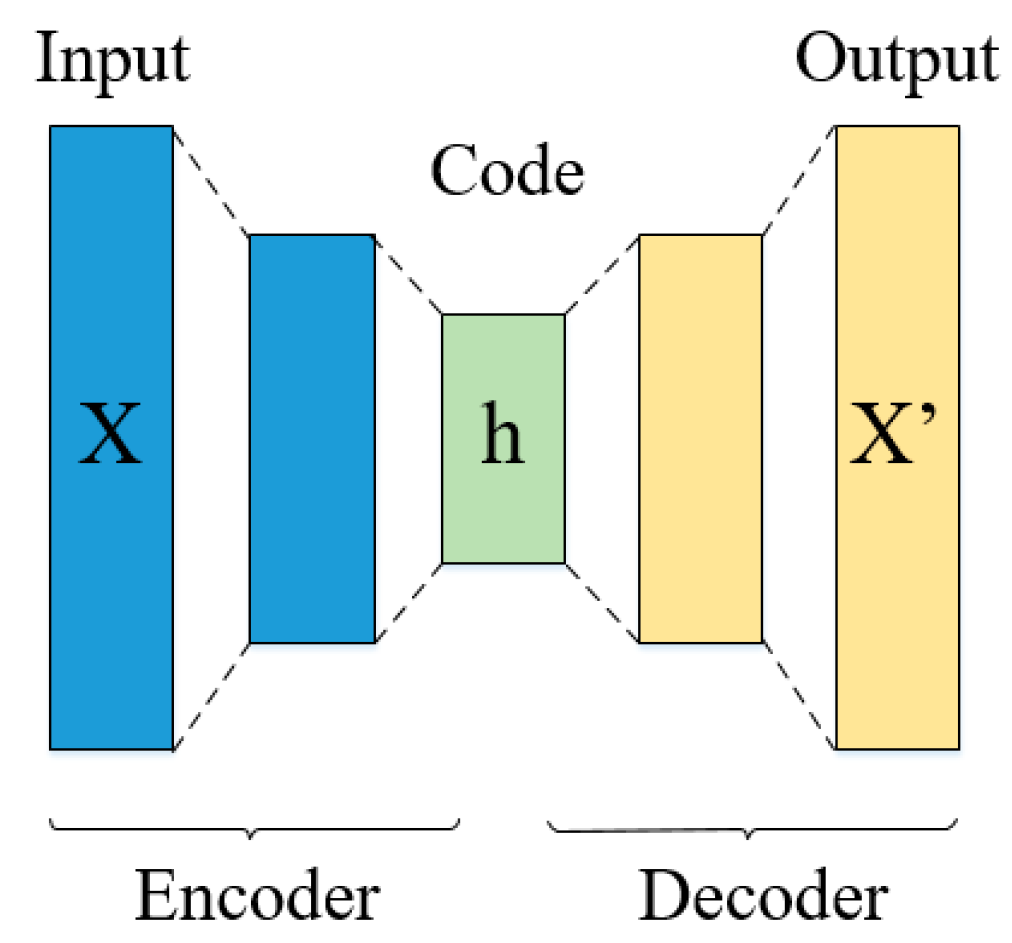


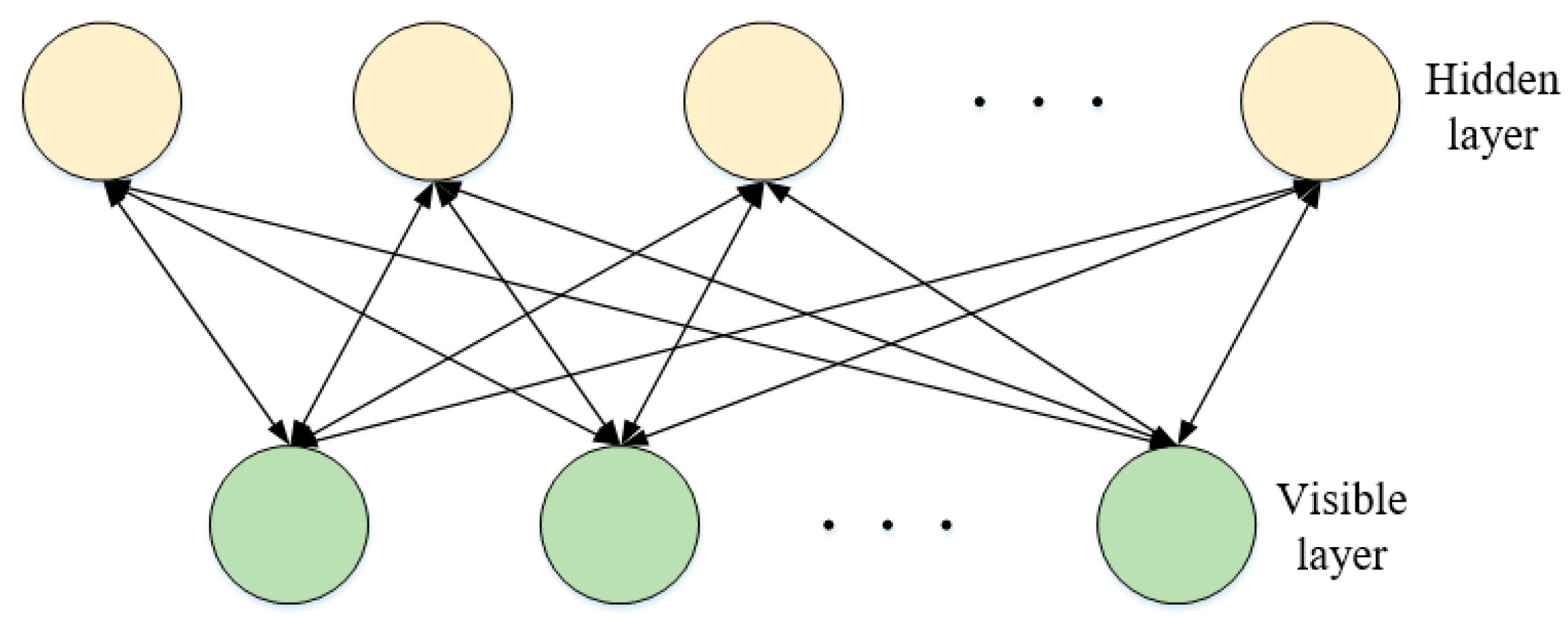

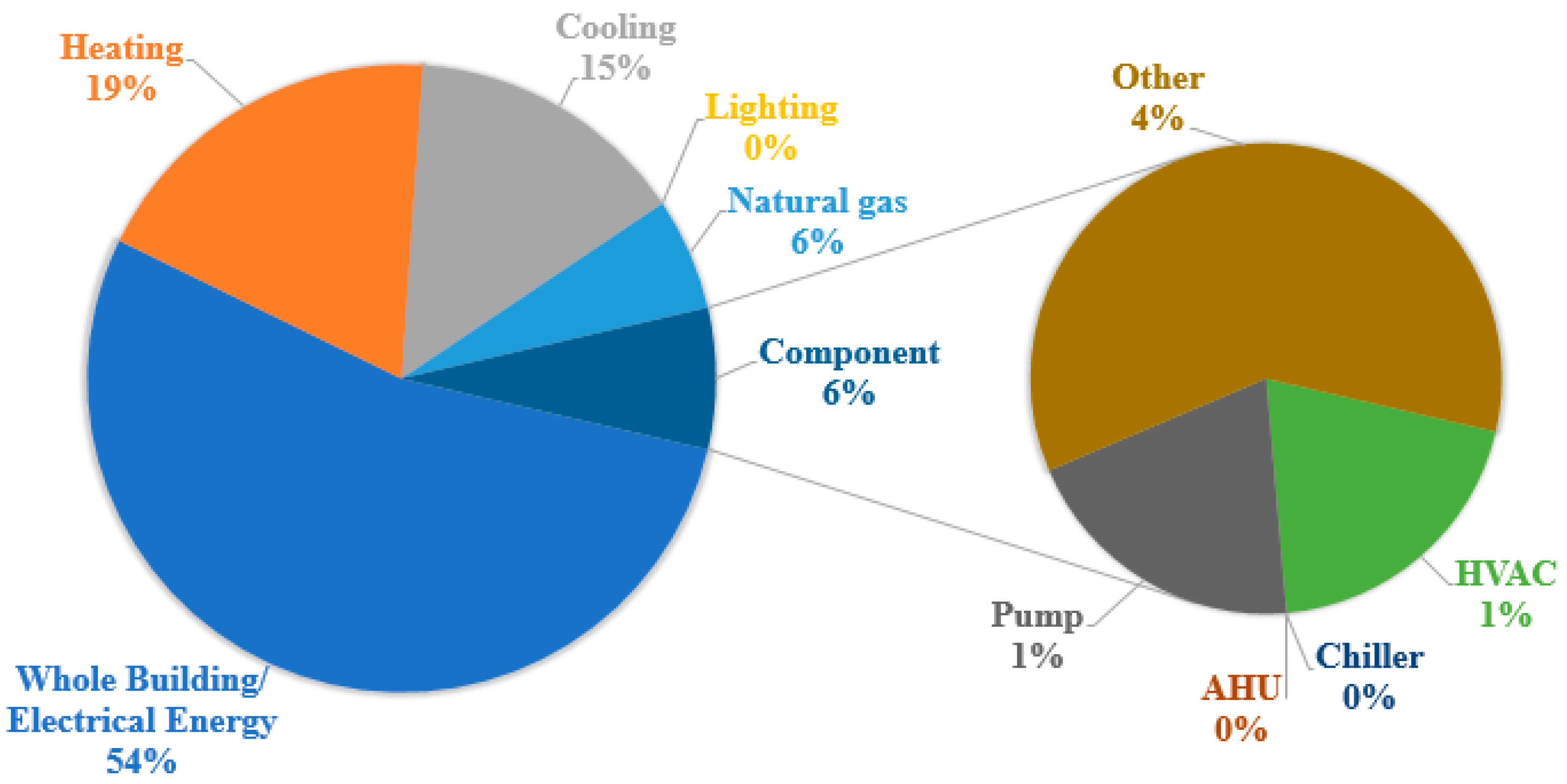
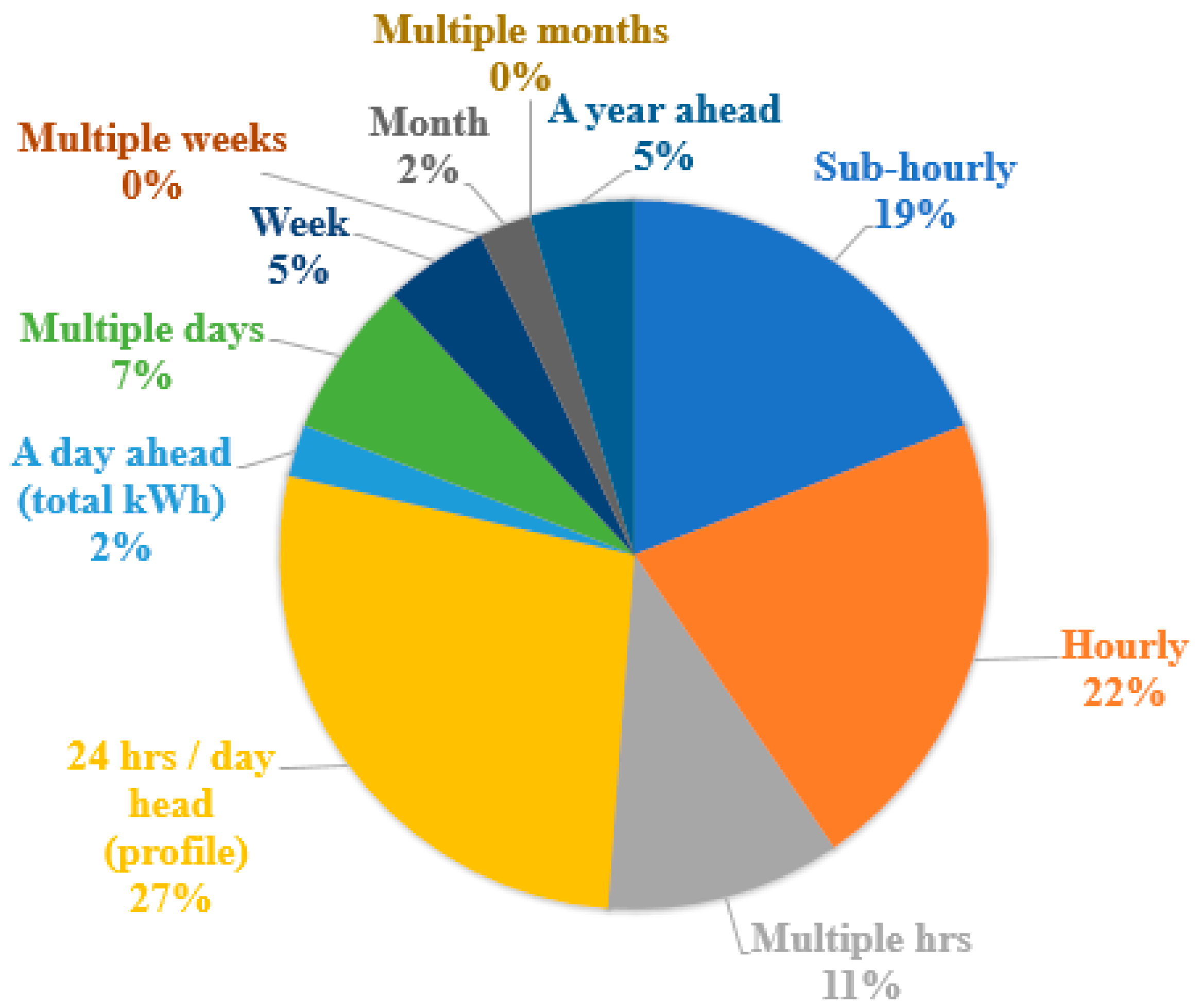
Publisher’s Note: MDPI stays neutral with regard to jurisdictional claims in published maps and institutional affiliations. |
© 2021 by the authors. Licensee MDPI, Basel, Switzerland. This article is an open access article distributed under the terms and conditions of the Creative Commons Attribution (CC BY) license (http://creativecommons.org/licenses/by/4.0/).
Share and Cite
Runge, J.; Zmeureanu, R. A Review of Deep Learning Techniques for Forecasting Energy Use in Buildings. Energies 2021, 14, 608. https://doi.org/10.3390/en14030608
Runge J, Zmeureanu R. A Review of Deep Learning Techniques for Forecasting Energy Use in Buildings. Energies. 2021; 14(3):608. https://doi.org/10.3390/en14030608
Chicago/Turabian StyleRunge, Jason, and Radu Zmeureanu. 2021. "A Review of Deep Learning Techniques for Forecasting Energy Use in Buildings" Energies 14, no. 3: 608. https://doi.org/10.3390/en14030608
APA StyleRunge, J., & Zmeureanu, R. (2021). A Review of Deep Learning Techniques for Forecasting Energy Use in Buildings. Energies, 14(3), 608. https://doi.org/10.3390/en14030608





